Building boom boosts malaria-carrying, invasive mosquito in Ethiopia
Anopheles stephensi poses major threat to cities in Africa, where malaria has primarily been a rural disease
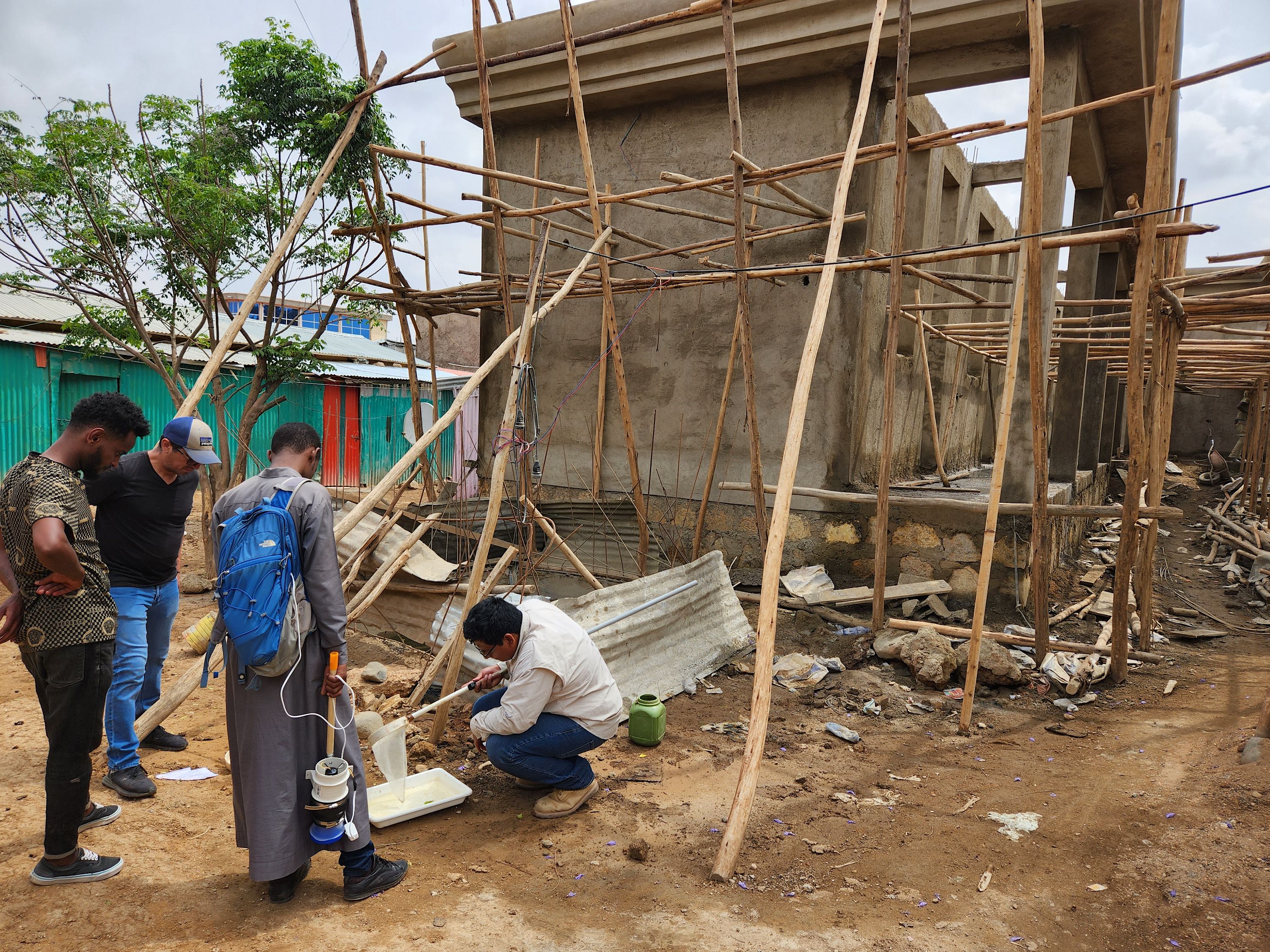
A malaria-carrying mosquito that thrives in urban environments is moving into Africa where a construction boom may be one factor helping the newcomer feel at home.
Lancet Planetary Health published the findings on the ecology of the invasive Anopheles stephensi mosquito led by Gonzalo Vazquez-Prokopec, a professor in Emory University’s Department of Environmental Sciences.
The invasion of stephensi poses a major threat to urban populations in Africa, where malaria has primarily been a rural disease. While most of the limited data available on stephensi in Africa has been gathered during the rainy season, this study focused on the city of Jigjiga in eastern Ethiopia during the peak of the dry season.
Stephensi was first detected in Jigjiga in 2018 and has persisted there despite harsh dry seasons of around three rainless months.
“We found that during this period of low-water availability, Anopheles stephensi is primarily exploiting habitats associated with construction,” says Vazquez-Prokopec, a leading expert in the disease ecology of urban mosquitos.
The researchers, including Jigjiga University entomologists, searched for standing water at locations across the city to sample for mosquito larvae.
The results showed that the major habitats consistently infested with stephensi larvae, serving as mosquito nurseries during the dry season, were the manmade pits used to store water at construction sites and small-scale, brick-making facilities.
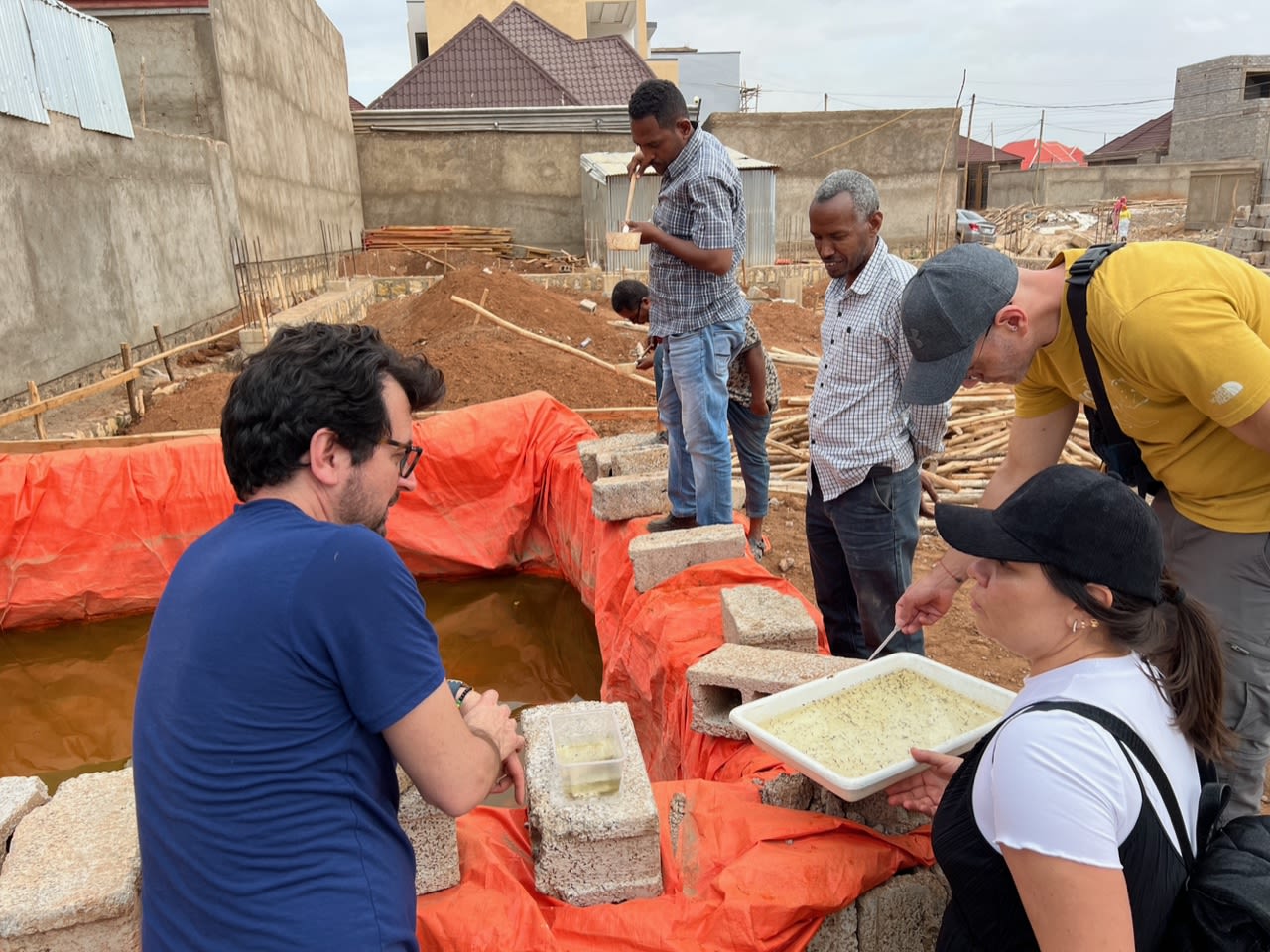
Gonzalo Vazquez-Prokopec, left, and colleagues gather mosquito larvae samples at a construction site in Jigjiga. Four other members of the 15 co-authors on the international team are shown, including (clockwise from left); Gabriela Gonzalez-Overa from the Autonomous University of Yucatán; Oscar Kirstein, a former member of the Vazquez-Prokopec lab now with the Israel Ministry of Health; Solomon Yared from Jigjiga University; and Araya Gebresilassie from Addis Ababa University.
Gonzalo Vazquez-Prokopec, left, and colleagues gather mosquito larvae samples at a construction site in Jigjiga. Four other members of the 15 co-authors on the international team are shown, including (clockwise from left); Gabriela Gonzalez-Overa from the Autonomous University of Yucatán; Oscar Kirstein, a former member of the Vazquez-Prokopec lab now with the Israel Ministry of Health; Solomon Yared from Jigjiga University; and Araya Gebresilassie from Addis Ababa University.
Targeting these sites for control of stephensi larvae during the dry season may represent a unique opportunity for resource-strapped public health officials to mitigate malarial outbreaks in the city, Vazquez-Prokopec says.
He cites stocking the construction pits with larvae-eating fish as one potential intervention, since the large pits are kept filled with water during the lengthy process of constructing buildings.
Jigjiga, which grew from around 126,000 inhabitants in 2007 to 800,000 today, is pocked with construction sites and brick-making facilities. The building boom accelerated even further in 2018, following major political reform in Ethiopia.
Building booms are occurring throughout much of Africa, as the continent is the most rapidly urbanizing on Earth.
“Anopheles stephensi arrived in Africa at the best time for the mosquito, but the worst time for the people,” Vazquez-Prokopec says.
The research was funded by a rapid-response grant from the Emory Global Health Institute.
Emory has a long history of public health projects in Ethiopia. Through its Office of Global Strategies and Initiatives, the university has developed an on-the-ground network of local expertise, including a country office in Addis Ababa, established in 2010.
Co-authors of the current paper include Solomon Yared and Elyas Abdulahi from Jigjiga University; Araya Gebresilassie and Esayas Akillu from Addis Ababa University; Uriel Kitron from Emory University; Gabriela Gonzalez-Olvera, Azael Che-Mendoza, Wilbert Bibiano-Marin and Pablo Manrique-Saide from the Autonomous University of Yucatán, Mexico; Elizabeth Waymire and Tamar Carter from Baylor University; Jo Lines from the London School of Public Health, Oscar Kirstein from the Israel Ministry of Health; and Audrey Lenhart from the U.S. Centers for Disease Control and Prevention (CDC).

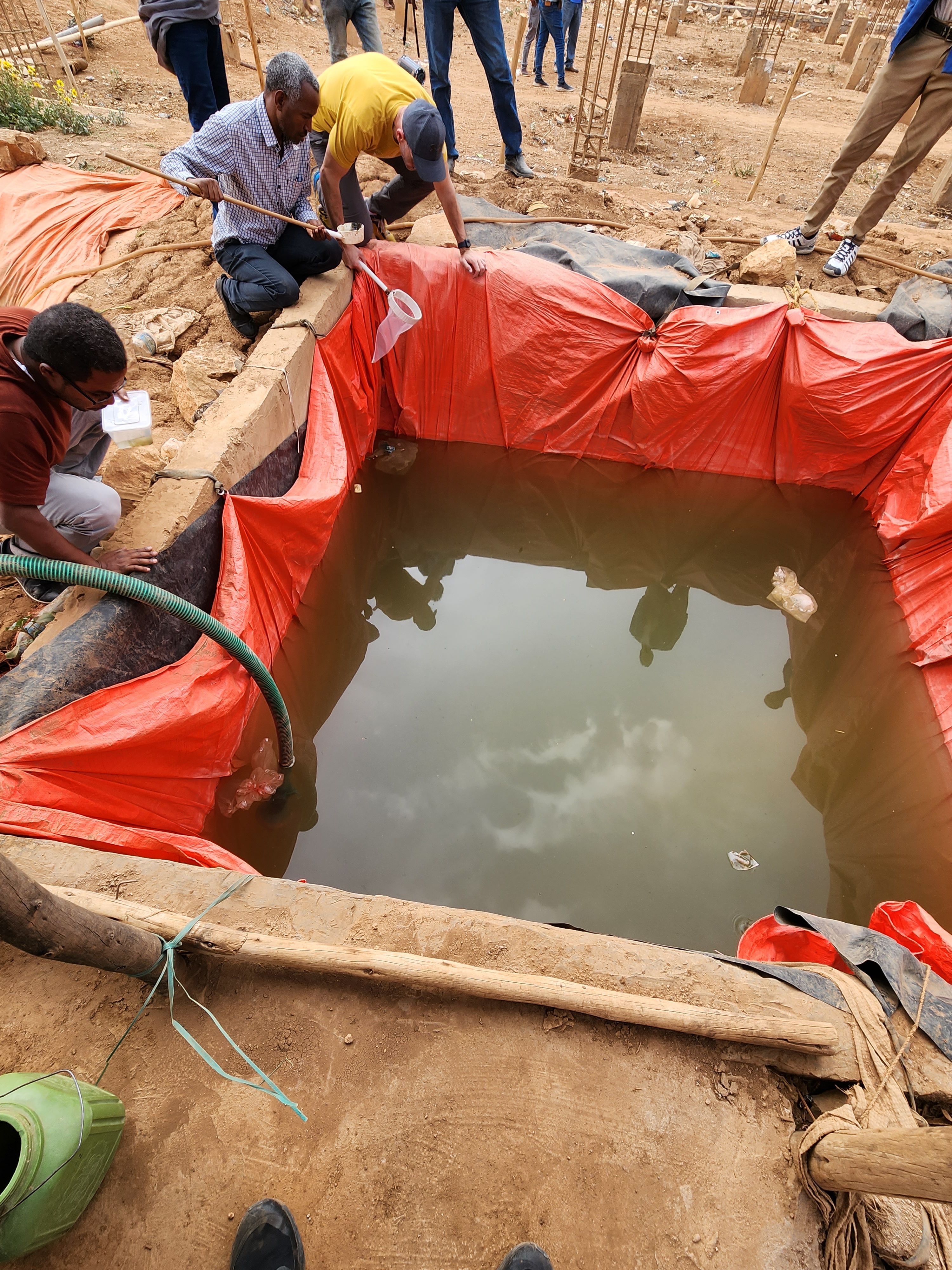
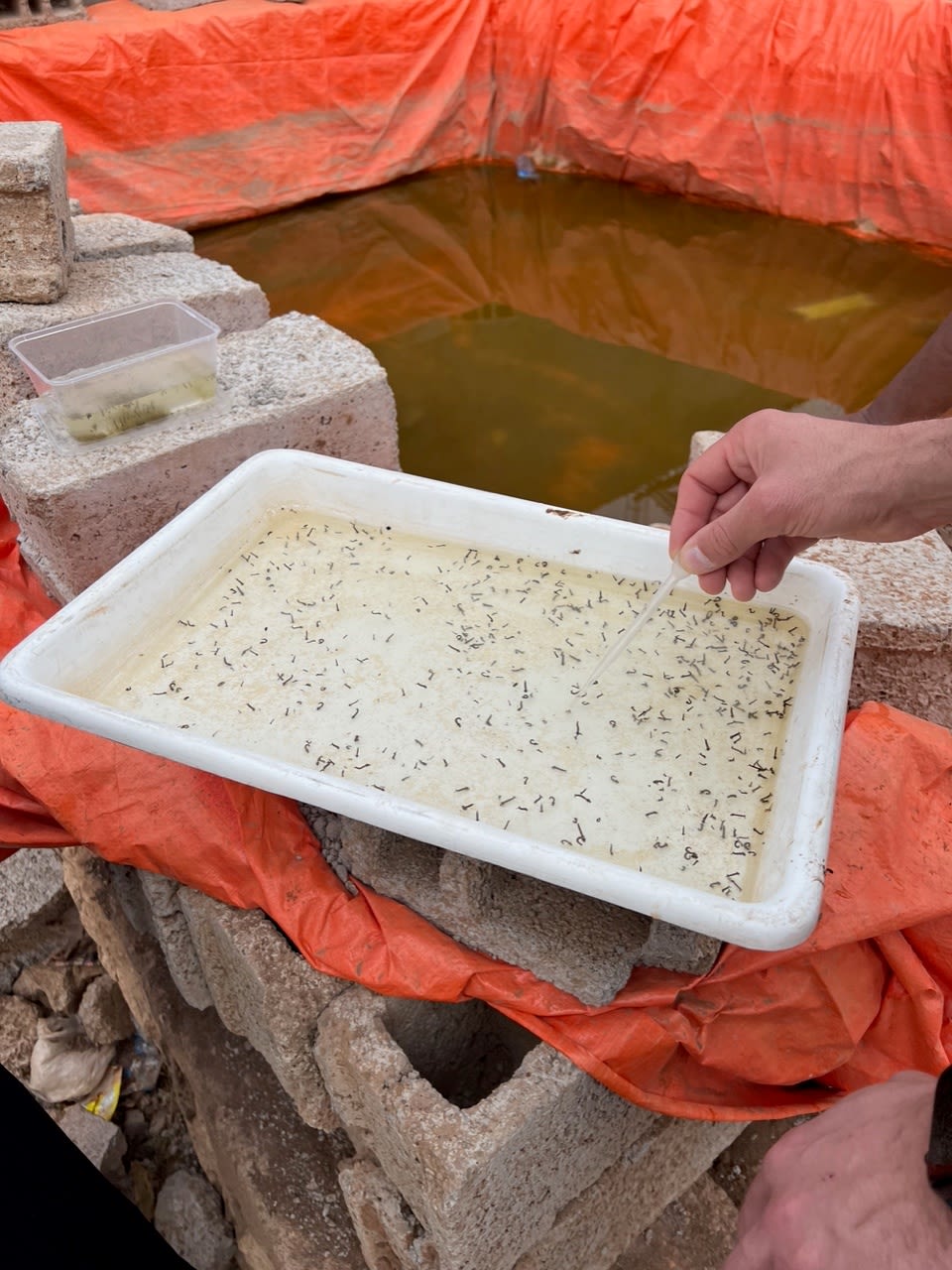
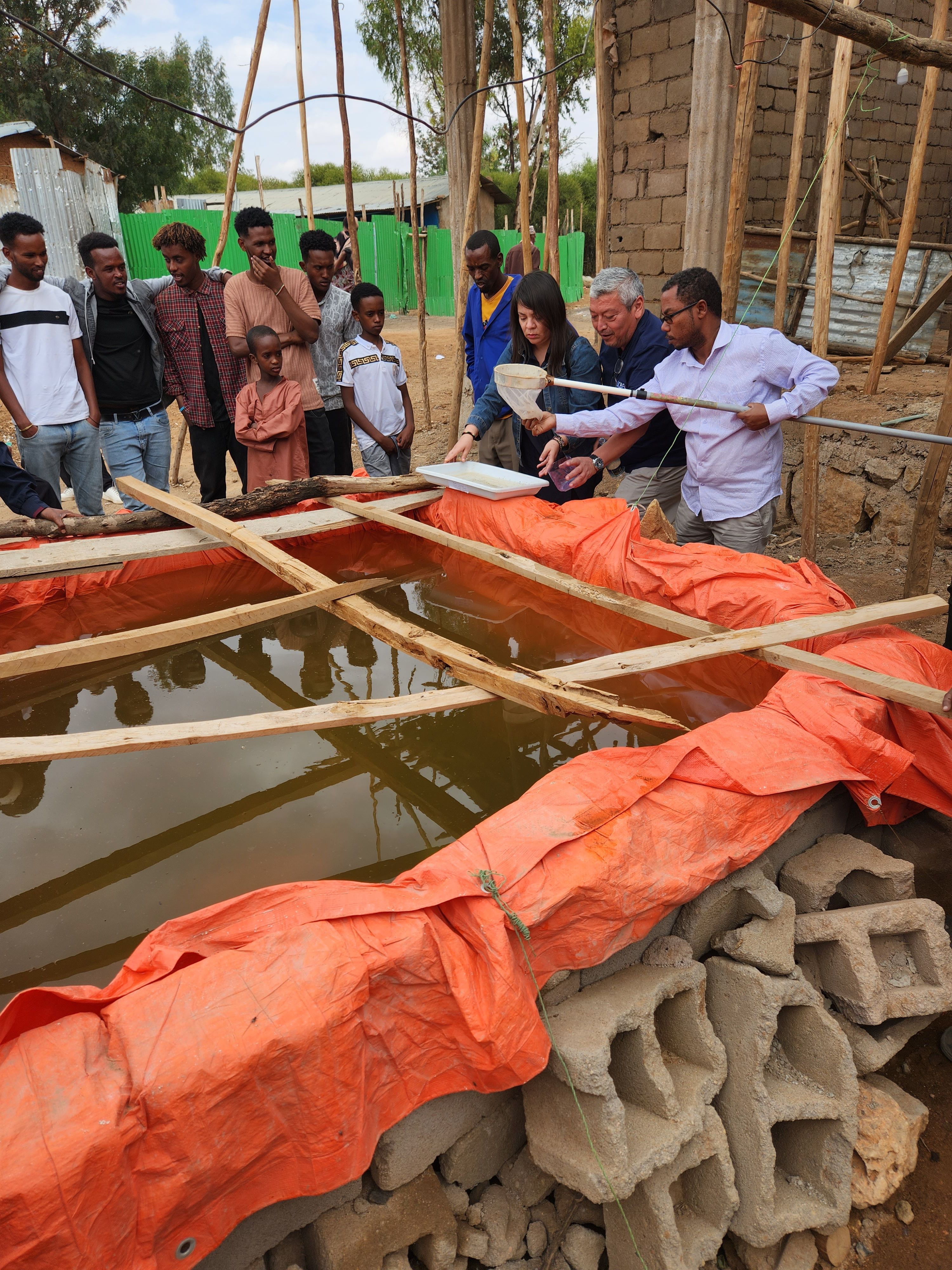
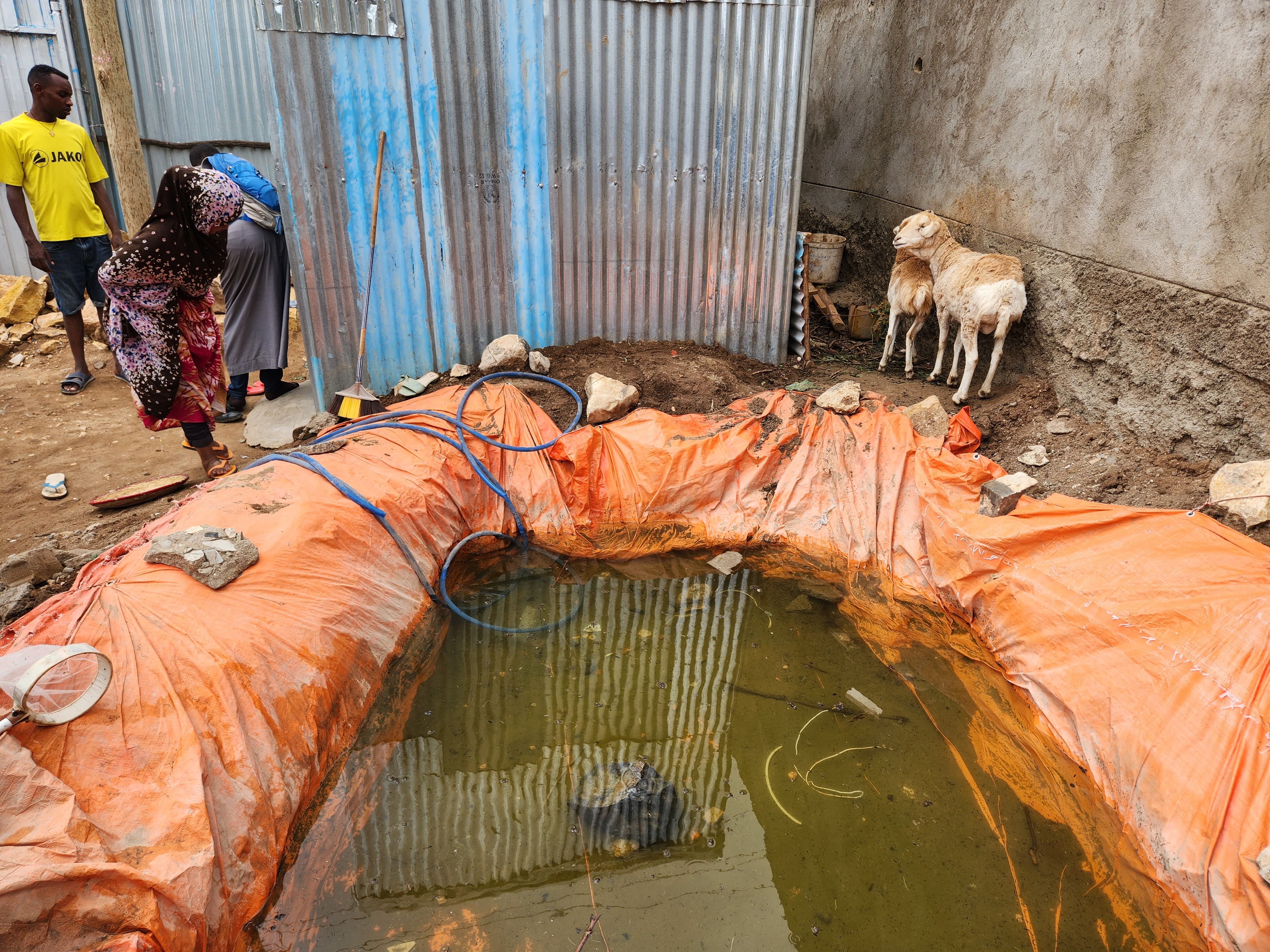

Some of the manmade pits at construction sites consist of simple earthen walls covered in plastic sheeting.
Some of the manmade pits at construction sites consist of simple earthen walls covered in plastic sheeting.

Sampling a more permanent pit at a building site made with concrete and lined with sheeting.
Sampling a more permanent pit at a building site made with concrete and lined with sheeting.

Mosquito larvae collected from a pit of standing water at a construction site. A pipette is used to separate out stephensi larvae from other species.
Mosquito larvae collected from a pit of standing water at a construction site. A pipette is used to separate out stephensi larvae from other species.

Many locals approached the research team to learn about their work during the process of sampling for mosquitos.
Many locals approached the research team to learn about their work during the process of sampling for mosquitos.

One of the construction pits sampled by the researchers that was found to be infested with stephensi larvae. People in Jigjiga commonly keep goats and sheep within their premises.
One of the construction pits sampled by the researchers that was found to be infested with stephensi larvae. People in Jigjiga commonly keep goats and sheep within their premises.
Malaria annually kills around 620,000 people globally, mostly in Africa, according to the World Health Organization.
Stephensi, long a major vector of malaria in Asia, was first identified in Africa in the port city of Djibouti in 2012. It has since been detected in Ethiopia, Somalia, Kenya, Nigeria and Ghana. The insect has already sparked several urban outbreaks of malaria in Africa, including in Dire Dawa, Ethiopia’s second-largest city.
The invader brings a challenging new twist to malaria-eradication efforts on the continent, where malaria is overwhelmingly a rural disease, spread by other species of mosquitos that are adapted to live in rural areas. African public health officials have made great strides controlling the disease, using methods targeting the unique behaviors of these rural mosquitos and the lifestyles of people in the countryside.
Stephensi, however, is a game changer. This species of mosquito can live in rural environments but also thrives in urban areas. It’s resistant to insecticides and adept at surviving dry seasons. Its arrival in Africa poses a serious potential threat to millions of city dwellers who have little or no immunity from repeated prior exposure to malaria.
“Different methods of surveillance and control than those used in the countryside will be needed to combat malaria spread by Anopheles stephensi,” Vazquez-Prokopec says.
Indoor spraying and the use of bed nets impregnated with insecticide, for instance, are malaria interventions in rural areas. That’s because night is the peak biting time for the two mosquito species that are currently the primary malaria vectors in Africa.
Stephenesi, however, tends to bite outside and at dusk before people have gone to bed.
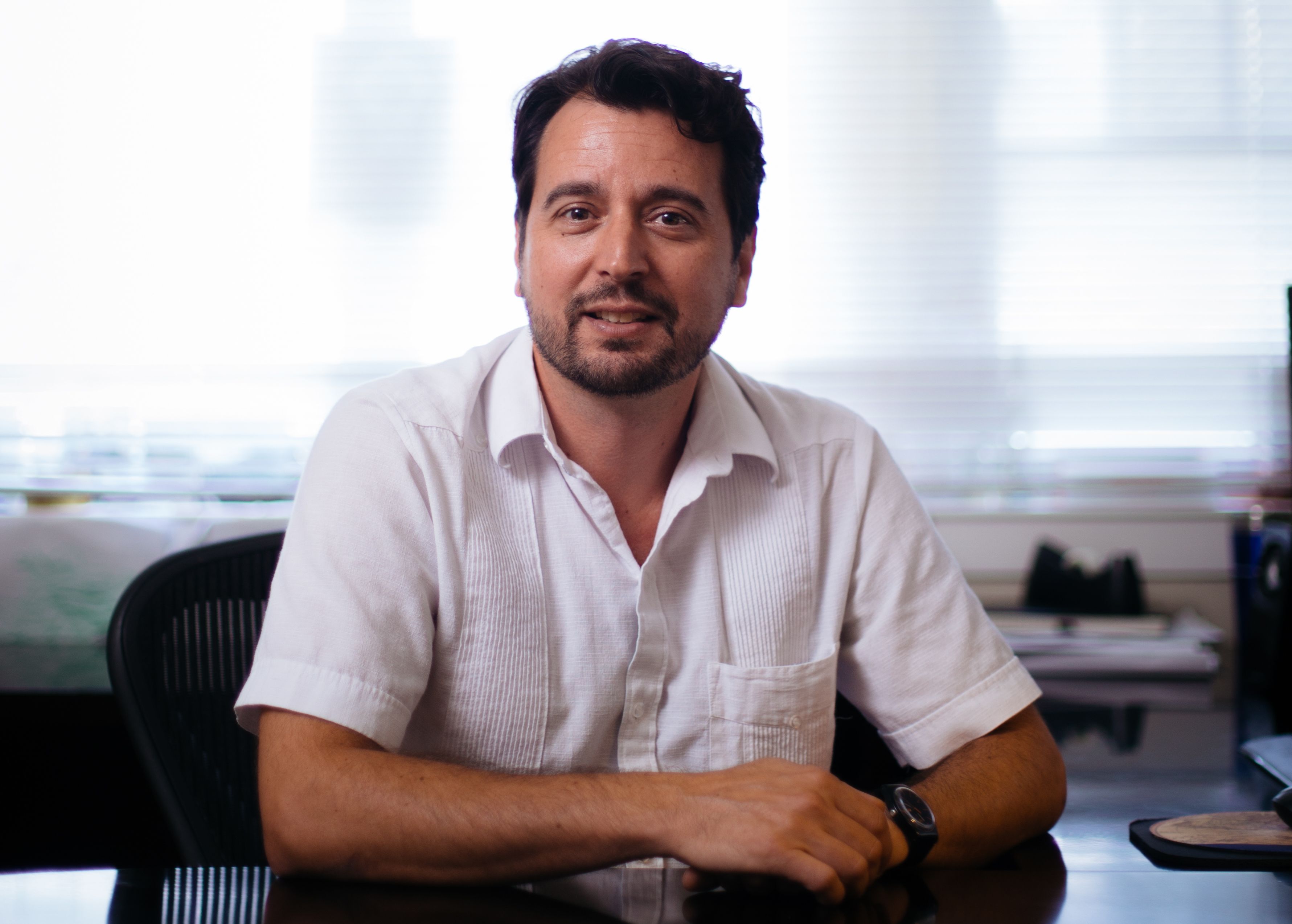
Gonzalo Vazquez-Prokopec is a member of the World Health Organization (WHO) Strategic Advisory Group of Experts on Dengue Immunization. He also participates in WHO working groups on Anopheles stephensi control.
Gonzalo Vazquez-Prokopec is a member of the World Health Organization (WHO) Strategic Advisory Group of Experts on Dengue Immunization. He also participates in WHO working groups on Anopheles stephensi control.
For more than 15 years, Vazquez-Prokopec has traced outbreaks of viral diseases spread by another urban mosquito, Aedes aegypti, including dengue fever, Zika and chikungunya. His research in South America and Mexico considers the interactions of mosquitos, pathogens and people.
The goal is to zero in on the most effective ways for cash-strapped public health officials to control outbreaks of these mosquito-borne diseases in sprawling, densely packed cities where many people live in substandard housing.
Dengue fever alone sickens nearly 100 million people a year globally, although its annual death toll of around 40,000 people is far less than that of malaria.
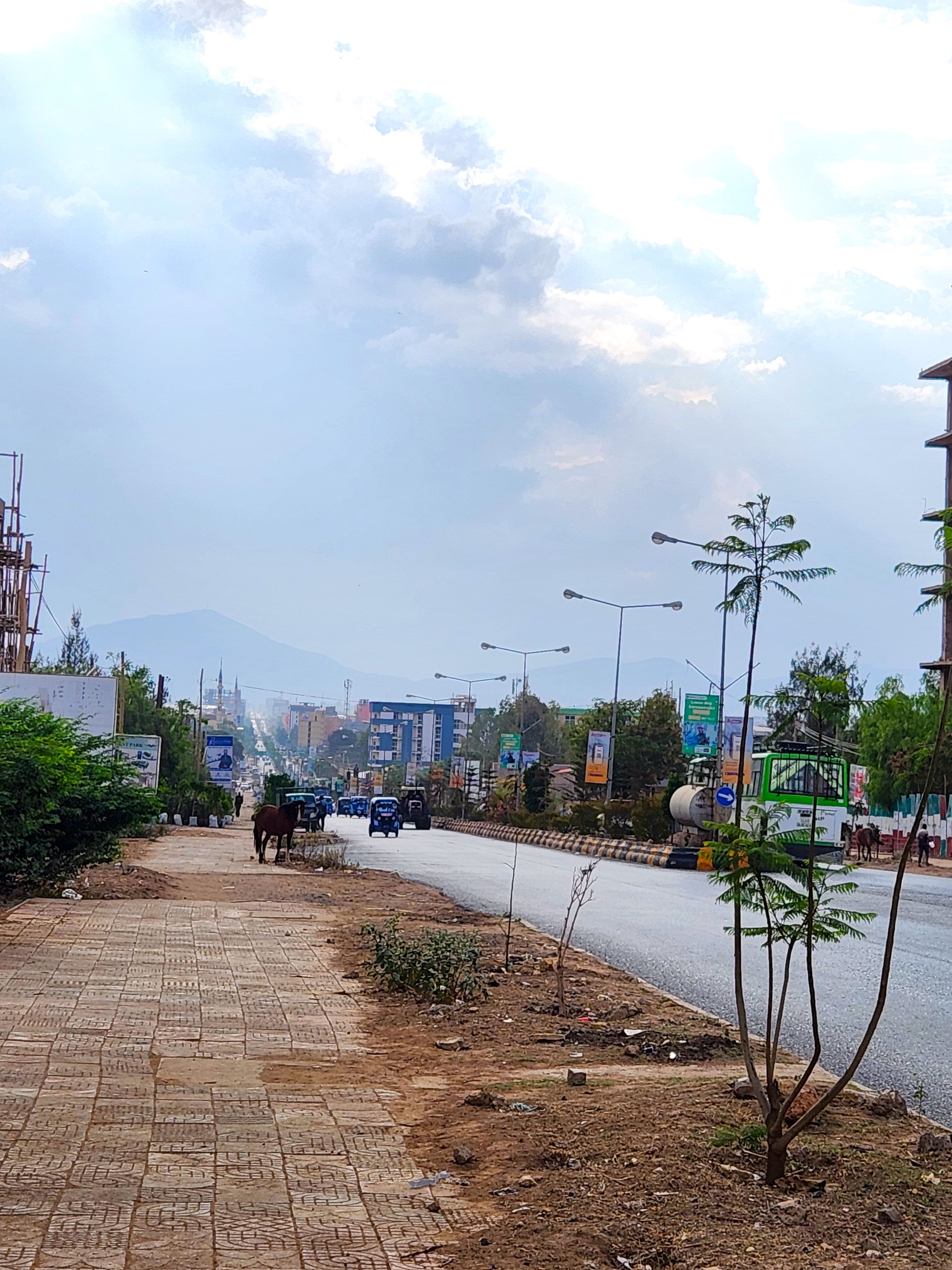


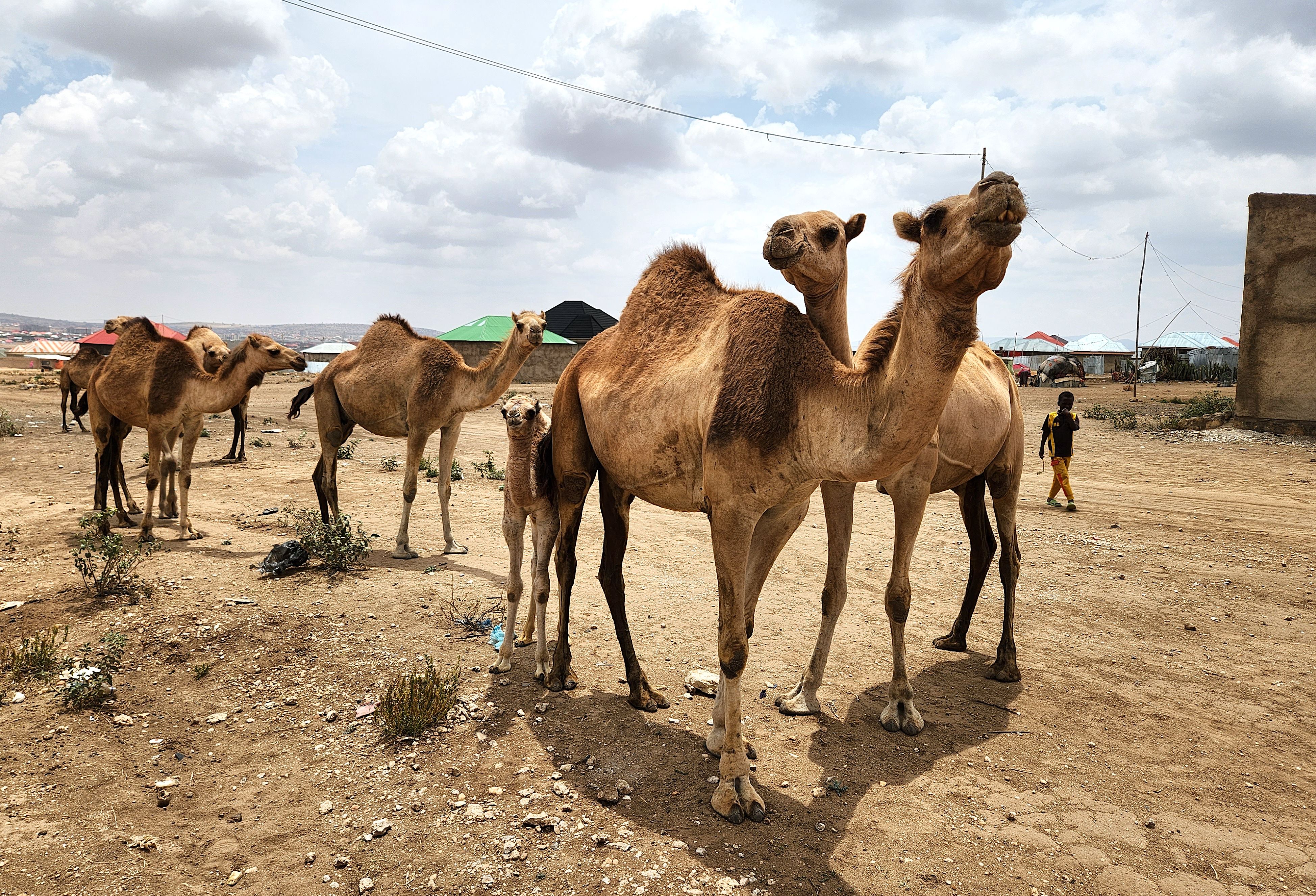

A view of the main road of Jigjiga and the mountains surrounding the city.
A view of the main road of Jigjiga and the mountains surrounding the city.

Tanker trucks haul in water from outside the city to deliver to households and businesses, including construction sites, during the dry season.
Tanker trucks haul in water from outside the city to deliver to households and businesses, including construction sites, during the dry season.

Donkey carts fitted with plastic drums are also used to deliver water to households during the dry season.
Donkey carts fitted with plastic drums are also used to deliver water to households during the dry season.

A herd of camels owned by pastoralists on the outskirts of Jigjiga. Livestock and other domesticated animals may be a potential blood source for adult stephensi mosquitos.
A herd of camels owned by pastoralists on the outskirts of Jigjiga. Livestock and other domesticated animals may be a potential blood source for adult stephensi mosquitos.
After identifying the man-made construction pits as the primary habitats for the stephensi larvae, the researchers entered their GPS coordinates into Google Earth to visualize their locations. It became apparent that the sites provided a unique spectral signature — demarcated by size, color contrast and the presence of water — that allowed the researchers to easily identify other construction pits throughout Jigjiga.
Historical data archived by Google Earth gave the researchers a view into how the pattern of the construction sites evolved in relation to the rapid development of the city since 2016. Google Earth maps also reveal the gradient of population density as the semirural outskirts gradually become absorbed by urban development.
“It may be possible to use Google Earth like a time machine as one tool to understand the dynamics of how stephensi exploits human habitats to survive and to expand its range,” Vazquez-Prokopec says.

Solomon Yared, left, from Jigjiga University and Esayas Aklilu of Addis Ababa University, center, discuss findings in the lab. Araya Gebresilassie, also of Addis Ababa University, uses a stereomicroscope to distinguish different species of adult mosquitos.
Solomon Yared, left, from Jigjiga University and Esayas Aklilu of Addis Ababa University, center, discuss findings in the lab. Araya Gebresilassie, also of Addis Ababa University, uses a stereomicroscope to distinguish different species of adult mosquitos.
Funded by a $270,000 grant from the CDC, Vazquez-Prokopec and his colleagues are now expanding their research into stephensi in Jigjiga along with several other Ethiopian cities.
They will use satellite data to explore urban-rural gradients across these cities, from the fully developed centers to the outskirts where there is less development but a greater presence of domesticated animals such as cattle and sheep.
“We want to understand how different habitats across this developmental gradient influence the presence of stephensi,” Vazquez-Prokopec says. “We want to answer questions such as whether the mosquitos are reproducing faster in one area or another and the factors that may be influencing these differences.”
Better understanding the behaviors of the mosquitos within different ecologies will allow the researchers to develop a suite of tools to control stephensi.
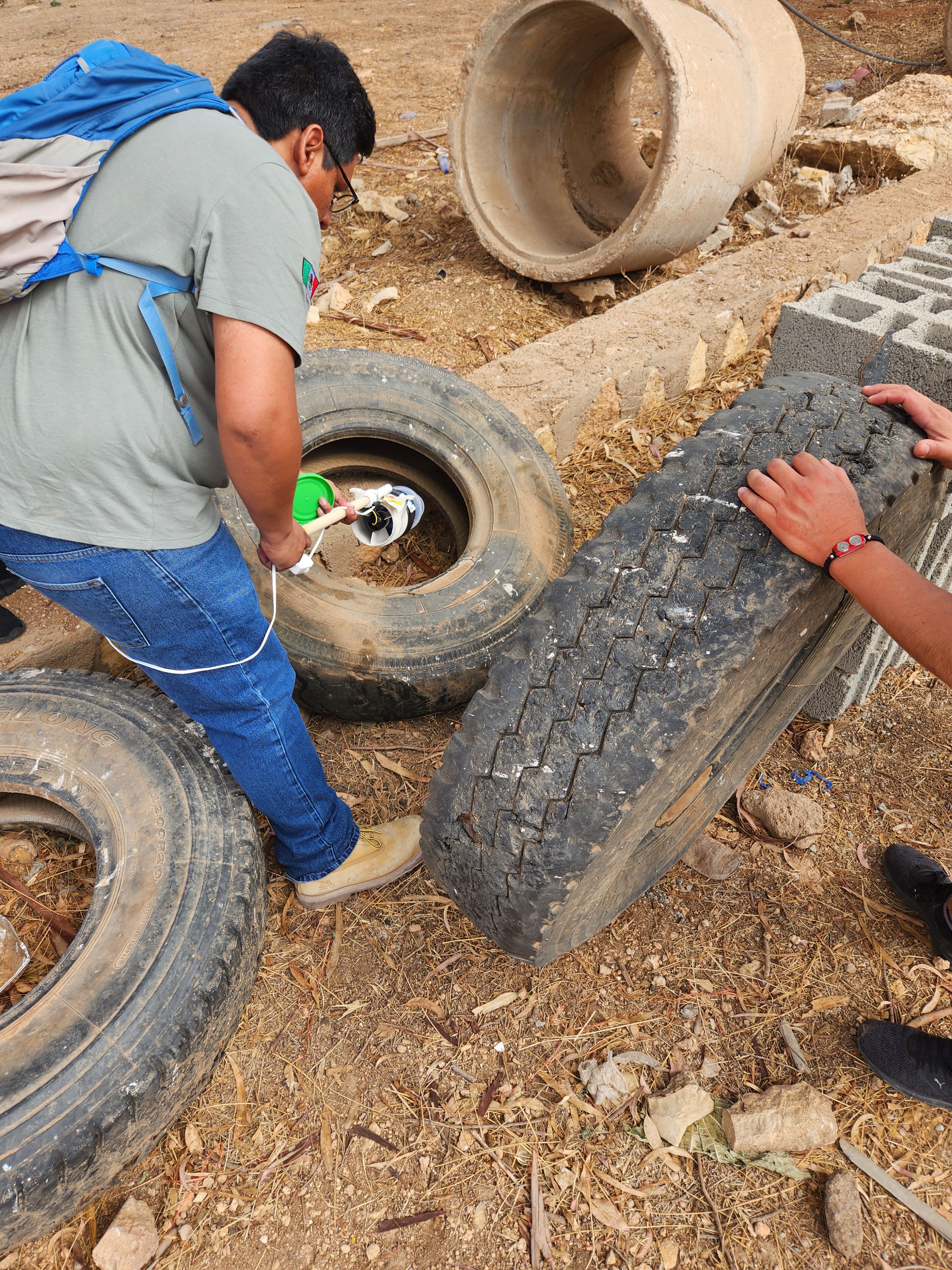
Wilberth Bibiano-Marin of the Autonomous University of Yucatán searches for the presence of adult mosquitos in discarded tires in a vacant lot in Jigjiga. He uses a "mosquito vacuum" known as the "Prokopack," invented in 2009 by the Vazquez-Prokopec lab using inexpensive parts found at hardware stores.
Wilberth Bibiano-Marin of the Autonomous University of Yucatán searches for the presence of adult mosquitos in discarded tires in a vacant lot in Jigjiga. He uses a "mosquito vacuum" known as the "Prokopack," invented in 2009 by the Vazquez-Prokopec lab using inexpensive parts found at hardware stores.
“The goal is to provide tools and guidance that enables public health officials to control these mosquitos as effectively as possible, so that their limited resources are not wasted,” Vazquez-Prokopec says. “Detecting patterns can enable public health workers to predict where hotspots may occur. That gives them an opportunity to prevent, or at least mitigate, an outbreak.”
The dengue-virus-carrying Aedes aegypti mosquito is also present in African cities, Vazquez-Prokopec notes, along with other species of the insect that have adapted to urban environments.
Working to control urban malaria outbreaks spread by stephensi may simultaneously help to control some other urban mosquito-borne diseases, although each disease and mosquito species presents unique challenges.
Aedes aegypti, for instance, only bites humans and lives almost exclusively in urban areas. Stephensi, however, also bites cattle and other animals and can get established in rural environments.
“Whenever possible, we will look for opportunities to synergize control methods across species of mosquitos,” Vazquez-Prokopec says.
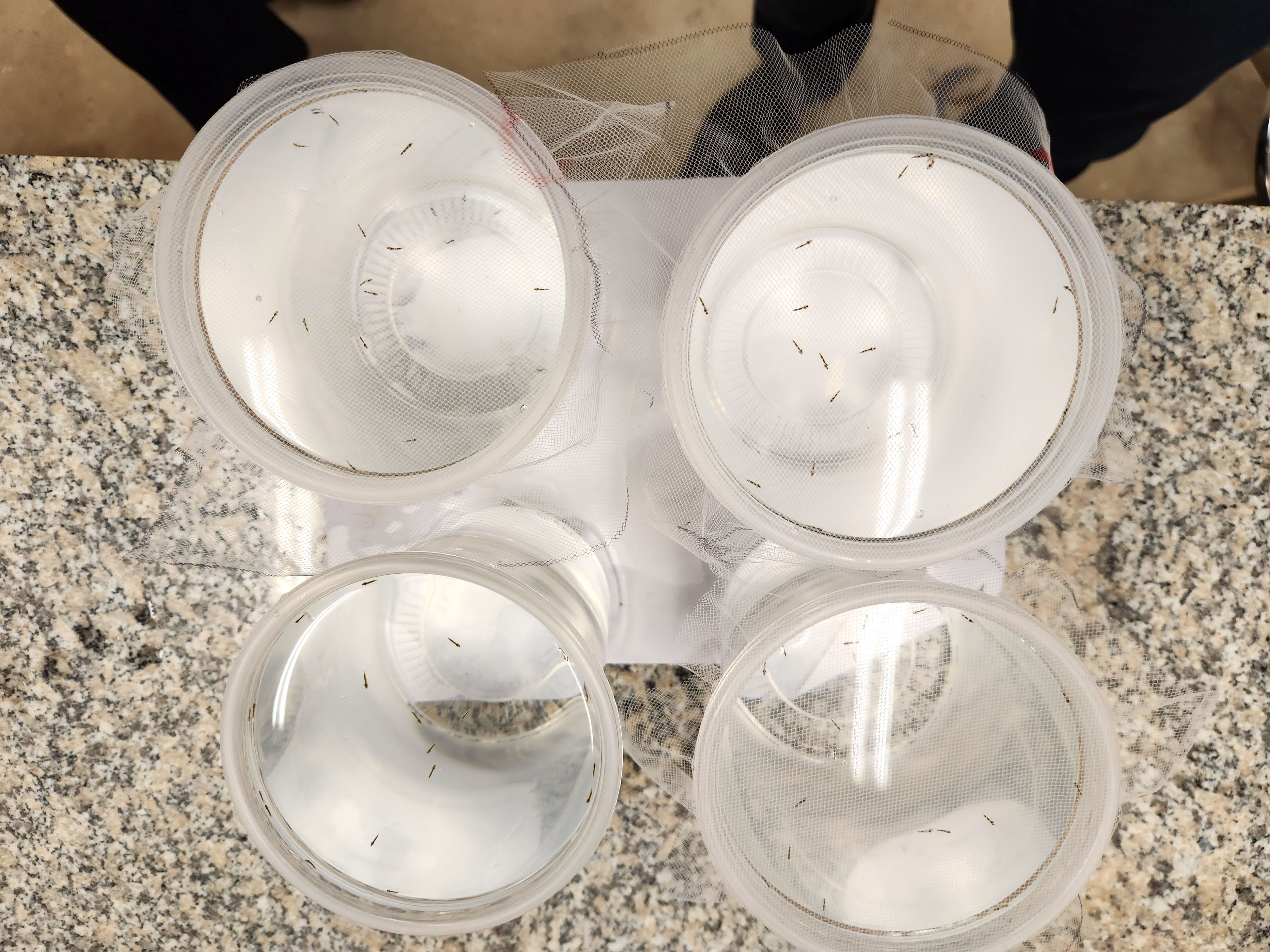
Stephensi larvae, above, in the lab that have been collected in the field. Below are adult mosquitos that have been collected and are in the process of being identified and sorted by species.
Stephensi larvae, above, in the lab that have been collected in the field. Below are adult mosquitos that have been collected and are in the process of being identified and sorted by species.
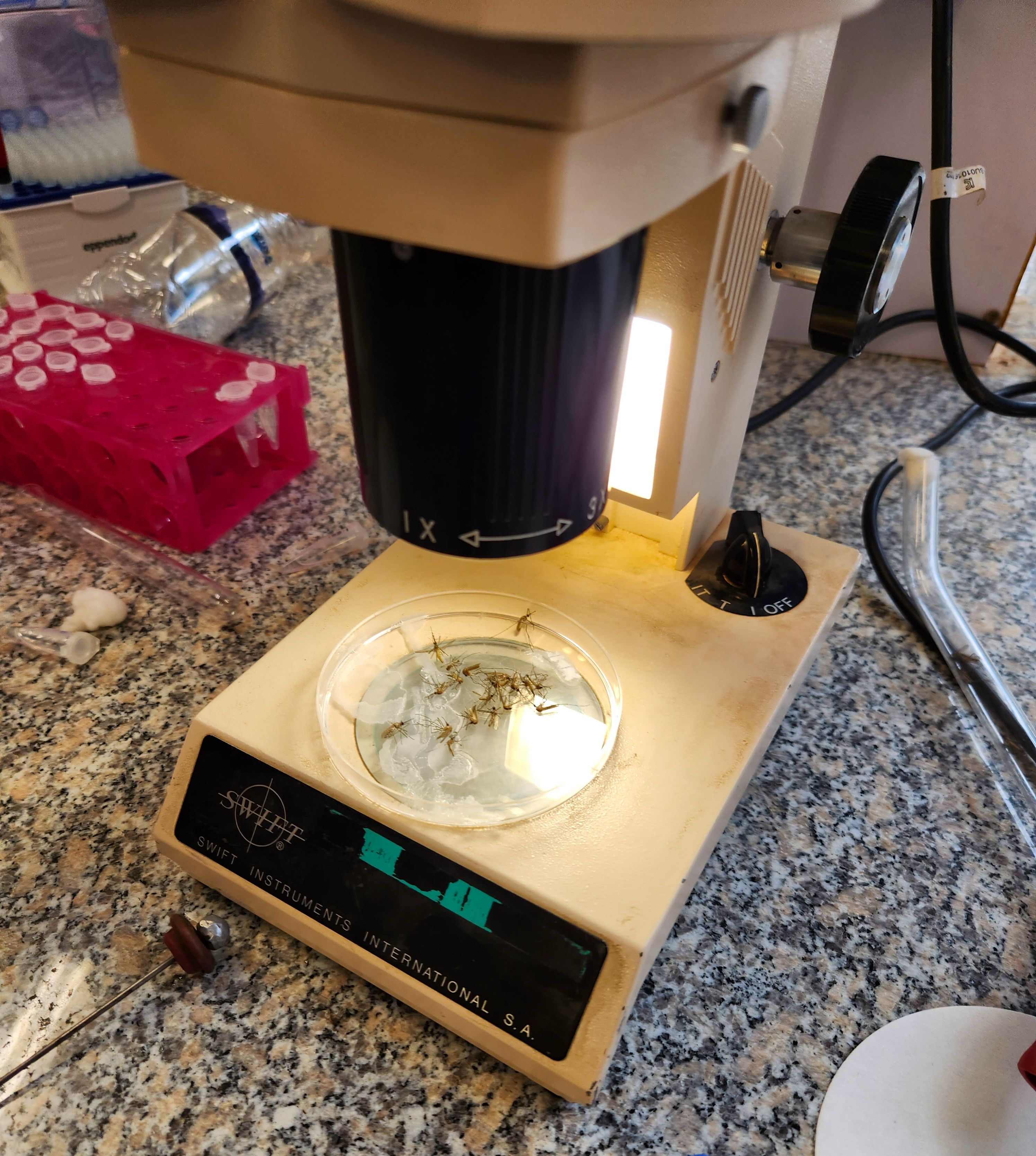
Djibouti, the first place in Africa that stephensi was identified, had made such gains in controlling malaria that it appeared the disease might be eliminated in the country. Since the arrival of stephensi, however, malaria exploded in Djibouti, rising from just 27 cases in 2012 to 70,000 cases in 2020, mostly in Djibouti City.
It is not clear whether urban malaria will follow a similar pattern as stephensi spreads across Africa. But it is important to realize the growing potential for malaria outbreaks in African cities, Vazquez-Prokopec says.
“Even if urban malaria only contributes to a small percentage of the disease burden in Africa, it could still take a tremendous toll,” he says. “It’s important to learn everything we can about the disease ecology of stephensi as it enters new habitats so we can give public health officials effective tools to reduce its impact on people.”
Story by Carol Clark
Related Stories
Using big data to zero in on a tiny predator and the diseases it spreads
Hidden "super spreaders" spur dengue fever
Media Contact: Carol Clark, 404-727-0501, carol.clark@emory.edu
Please visit Emory.edu and the Emory News Center

